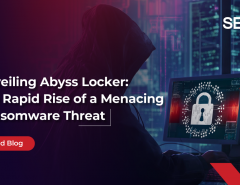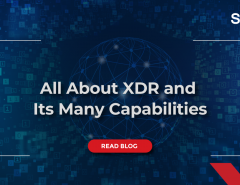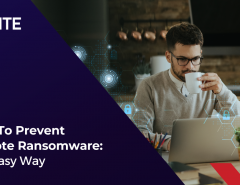An organization spends significant amount of money and effort on implementing cybersecurity yet it can be breached. In such situations, how does an organization identify if it had taken enough measures to protect itself before the breach occurred? This is where a security scorecard helps to understand organization’s preparedness to handle a cyber attack. Simply put, security scorecard is a set of metrics and measures that indicate the performance of organization on various security parameters. Here are a few important measures that should be part of every organization’s security scorecard.
Minimal set of metrics and measures for a security scorecard
While there can be many metrics and measures, the relevance of those will depend upon the nature of the business and the organization itself. However, these are a few samples of key metrics that should be measured by almost every organization:
1. Security budget: This is perhaps one of most important and easy to measure metric. It is a simple ratio of the budget of cybersecurity to the budget of overall IT of the organization. A low value for this measure indicates that you are not investing enough in your security. Too high a value may indicate that the investment may not be justified. However, the optimum range would depend upon the nature of the industry. For example, for financial services, the security budget should be rather high.
2. Vulnerability fix effectiveness: This measure is defined as the percentage of identified vulnerabilities fixed within the time-period specified by the organization. Generally, security vulnerability are logged as priority one incident. All priority one incidents should be closed within a specific time. So, the vulnerability fix effectiveness would be defined as the percentage of vulnerabilities fixed within the priority one timelines. For this measure, the fix may not be a permanent one, as long as the gap is plugged.
3. Awareness: This measure indicates how effectively the information about security practices is shared across the organization. This is measured as a ratio of a total number of employees who have completed security training to the total number of personnel in the organization. Ideally, this figure is computed for a year and should be 100%.
4. Audit and accountability: This is slightly tricky but an essential Ideally speaking, all the fundamental aspects of security such as access control, software updates, etc. should be up to date for all systems at any instant (apart from SLA period). However, that is rarely the case. Many employees have access to the systems that they should not be having. Software in some machines may not be updated with latest patches. All these lapses create security risks making this measure important one. It may be calculated as: Ratio of the number of unauthorized user access provisioned divided by the total number of user access provisioned added to the ratio of the number of software patches & updates not installed (for each software on each machine) to the total number of patches and updates(for each software on each machine). Ideally, this number should be zero. The organizations should optimize this formula with more parameters that are relevant to them.
5. Risk assessment: This measure indicates the level of risk outstanding at any given point to the organization. It is measured as the ratio of the total number of vulnerabilities with no fix to the total number of vulnerabilities identified. It is well known that all the risk identified may not be mitigated, as much as we like them to be. Some risk mitigation has external dependencies, usually on a software This number indicates the level of risk that is beyond the organization’s control and its severity.
6. Value at risk: This measure is more about the impact of the security risk occurrence on the organization. It is well known that the actual cost of a breach is not just the primary value of the information breached but includes the future impact regarding losses, fines, cost of legal implications and lost business. It is this number that indicates the real value provided by the cybersecurity to your organization.
Once the security scorecard is ready, it should frequently be reviewed to understand the cyber breach risks for the organization. The performance on the scorecard should be evaluated on two fronts – The absolute performance on the scorecard against the internally set targets and the comparative performance with other organizations in the same industry (the benchmarks). Like any other business parameter, security scorecard represents the preparedness of the organization and risks that it faces. So what’s your enterprise’s security score?
As an IT security partner for your business, Seqrite provides comprehensive endpoint security from advanced cyber threats. To know more, visit our website or





No Comments